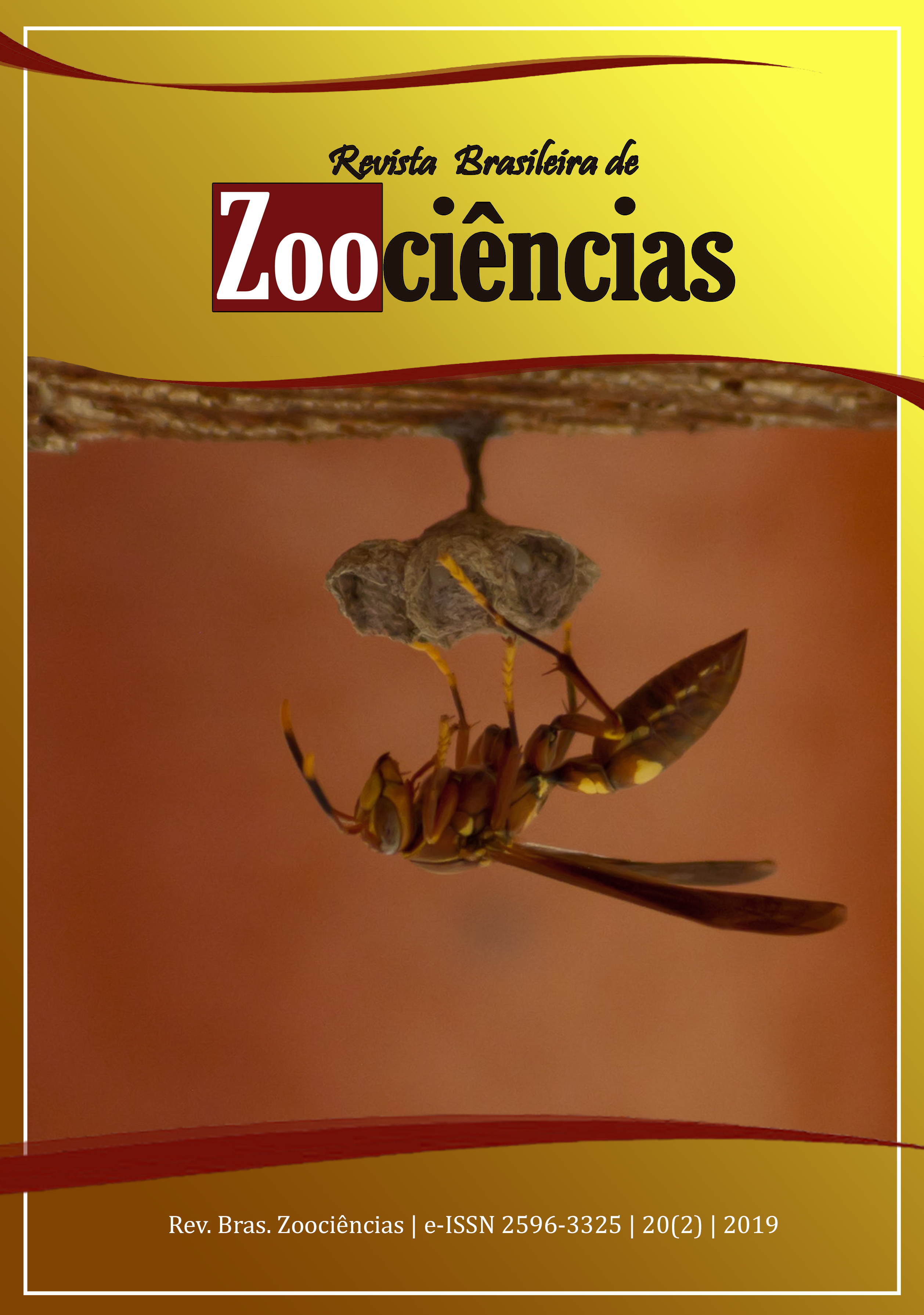Amphisbaenia: adaptations to the fossorial lifestyle
DOI:
https://doi.org/10.34019/2596-3325.2019.v20.26103Keywords:
Amphisbaenians, Bibliographic research, Fossorial adaptationsAbstract
Amphisbaenia are fossorial reptiles, which live in tunnel systems built by themselves. Currently, 195 species are described. The objective of this study was to gather bibliographic information on aspects of their morphology, physiology and behavior related to the fossorial habit. The main digging tool of the amphisbaenians is the head, whose morphology is related to the way excavation is carried out. In round-headed species, the mechanism is generalized, and in species with a paddle-shaped head, a spatula or a vertical keel, is specialized. The skull is sturdy, consisting of rigid bony plates, which must support the head thrust. The body is elongated and cylindrical, devoid of limbs, mostly formed by integumentary rings, important in the rectilinear displacement of the body back and forth within the tunnels. The elongation of the body is reflected in the internal organs which are, for the most part, elongated; the paired organs tend to undergo unilateral reduction or displacement. As a defense strategy they use caudal autotomy, tail exhibit or escape jump. They are predators that normally feed on insects and their larvae, caught by powerful jaws, strong recurved teeth. The visual system is reduced; however, they can perceive sounds and vibrations from the substrate and have an accurate chemical sense. Most species are oviparous with a low number of eggs per litter and the sexual cycle is usually synchronized with the hot and rainy season; but other aspects related to the reproductive behavior of species are still unknown. They exhibit behavioral thermoregulation and microhabitat selection with temperatures more favorable to their activities, performing vertical migrations in the soil according to the environmental temperature and seasons. Soil types and soil water content seem to affect the spatial distribution of Amphisbaenia, but this relationship needs to be better studied. The fossorial life protects it from intense solar radiation, offers a micro-habitat with higher moisture content than does the surface, protects against many predators, and is advantageous for catching soil-dwelling preys; however, it imposes limitations on the biotopes where these animals could be found.



